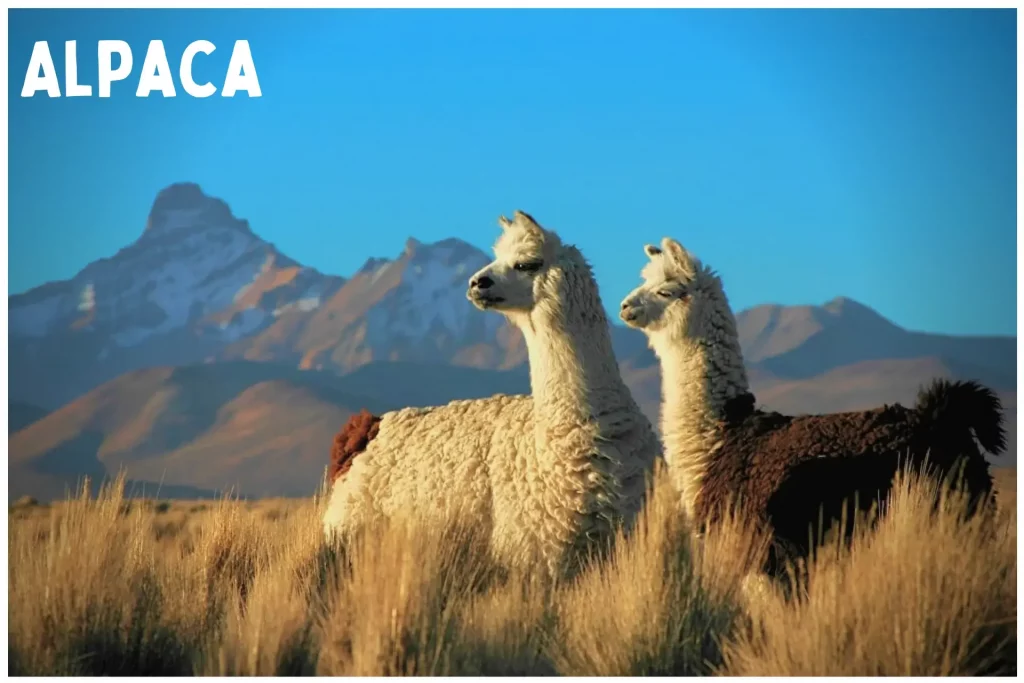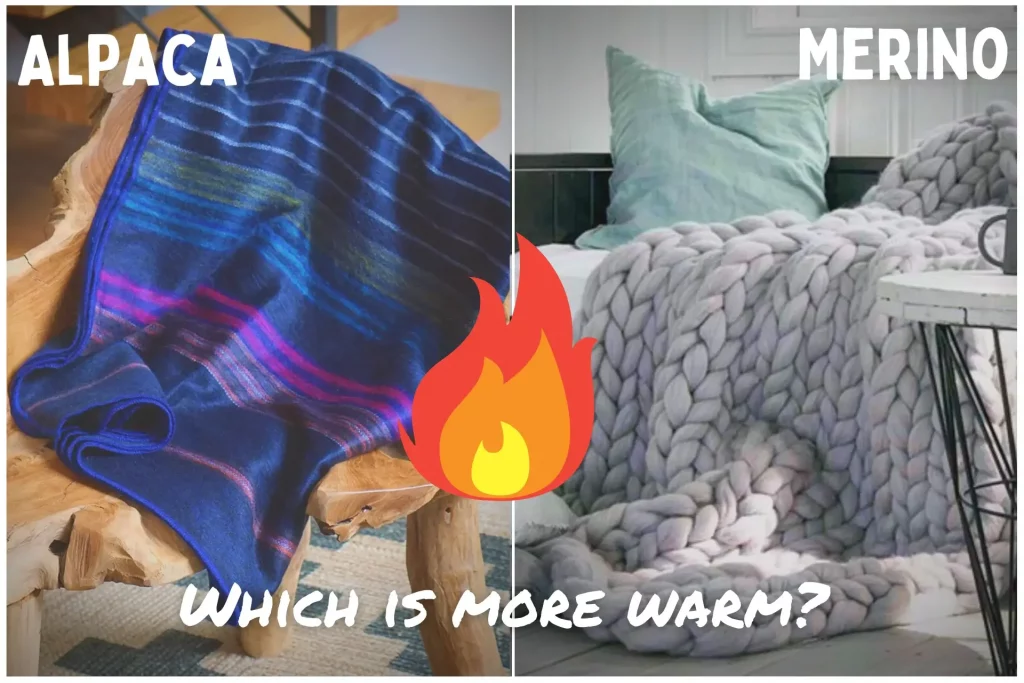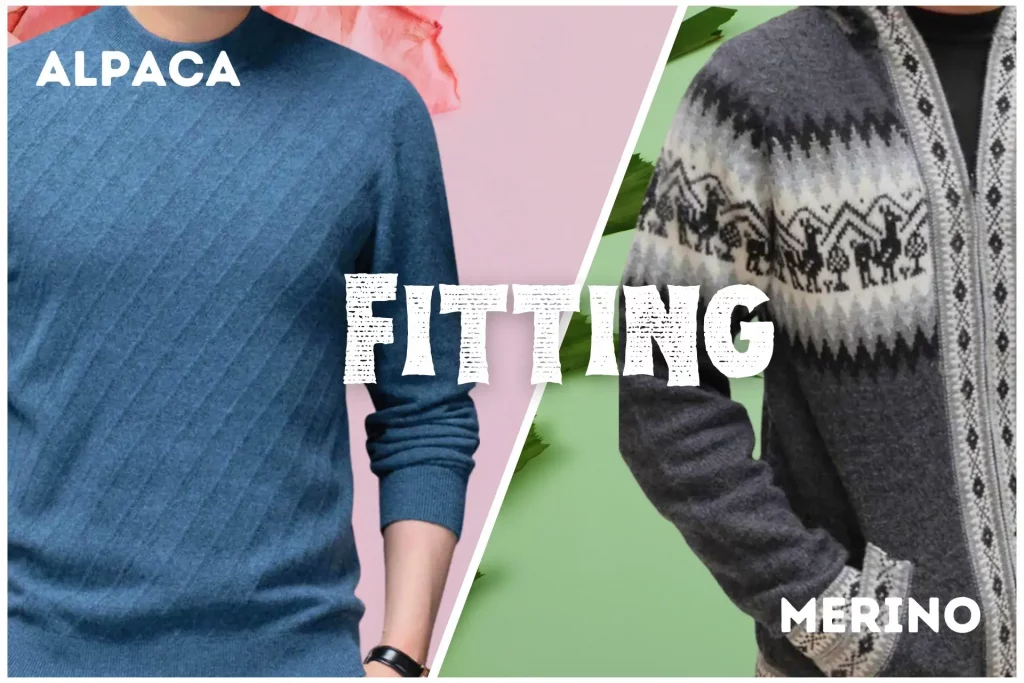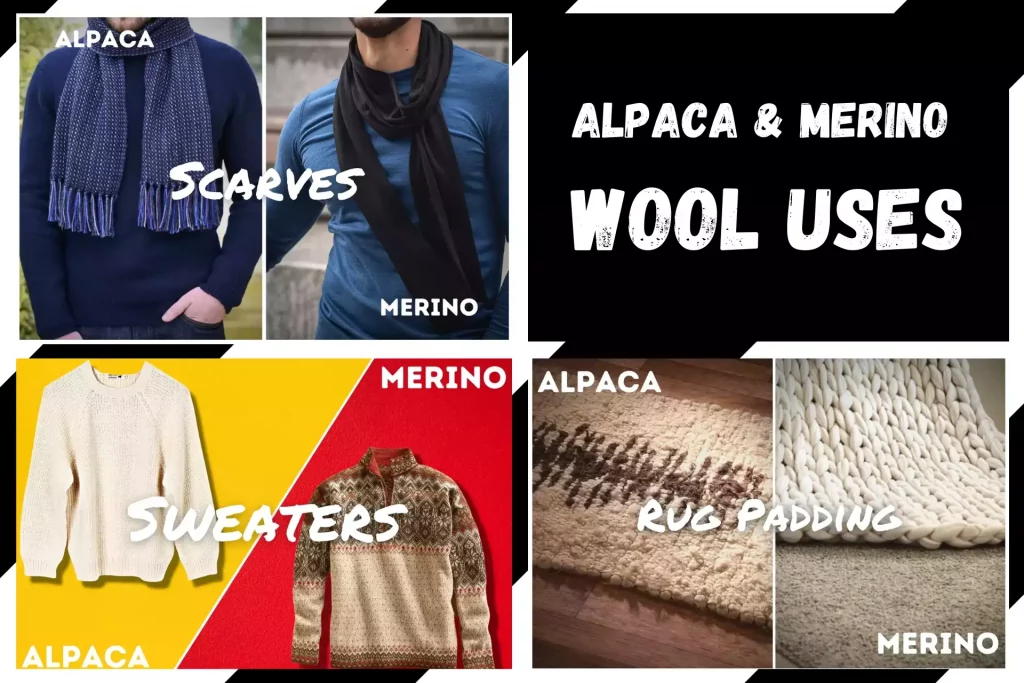Wool is not just another type of fiber. It is one of the most remarkable aspects of existence. It is possible to find disparities even across tribes from the same society or among fabric categories from the same fabric category. Everything is more interesting and unique because of these differences. Unfortunately, the price is also different.
Several distinctions that should be widely recognized now are that merino wool originates from a particular breed of sheep. In contrast, ordinary wool comes from a range of sheep, and alpaca wool belongs from a camel-like mammal known as an alpaca (also known as a llama in some circles). One thing that all of these different wools have in common is that they all keep you warm and comfortable.
Continue reading our article to find out more about the distinctions between the many types of wool available. It contains all the information you need to know about wool, which is not the same as wool. Fabric is one of a kind and comes in a variety of wonderful colors.
Table of Contents
Origins of Alpaca and Merino Wool:
Merino wool and alpaca wool are both natural and environmentally friendly items. Merino wool is derived from Merino sheep, an old breed in Spain but is currently raised worldwide.
Alpaca Fleece is derived from the Alpaca, a South American animal that is a member of the camelid family. Alpacas are also bred in other parts of the world, like Canada.
What is Merino Wool?

Merino wool is a type of fiber that is only found in Merino sheep. It is also known as “super wool.” Their fur is the most valuable sheep wool globally, and their wool is also the most valuable. It is thought that the Merino sheep originated in the mountains of Africa and then traveled to Spain.
The Merino sheep was given its name by the Spaniards, who were the first to do so. Merino sheep are now mostly found in Australia and New Zealand, with a small population in other countries.
According to the World Merino Sheep Association, Merino sheep account for more than half of Australia’s sheep population and ten percent of New Zealand’s sheep population.
New Zealand and Australia are two of the world’s top exporters of wool, with Australia ranking first and New Zealand ranking second.
Merino sheep, like all other sheep, should have their wool sheared once a year. It has a positive impact on their health and well-being. If sheep are not sheared, they are at risk of developing a variety of health problems.
The wool itself is typically 2 to 4 inches in length, and Merino sheep can yield anywhere between Thirteen and Forty pounds of wool each year, depending on the breed.
After being extracted, Merino sheep wool is spun into yarn in the same way that alpaca wool is. After that, the yarn is woven into fabric.
Advantages of Merino Wool:
- The tightly laid merino wool threads keep you warm and cozy in the winter because they create little air chambers that trap heat, functioning as an insulator and exhibiting temperature regulating characteristics.
- Summertime merino wool can store up to 33 percent of the body’s moisture in its fibers, which allows you to stay dry while also providing a cooling impact as the moisture evaporates from your skin.
- It has no odor because the scaly fibers on its surface prevent microorganisms from attaching themselves to it. Aside from that, it has a self-cleaning property. Merino fibers are based on two types of cells that scrape against each other, which allows them to be extremely successful at self-cleaning.
- A significant advantage of Merino wool is that it is more flexible and has a greater memory due to the fiber’s molecular structure, which allows our bodies to move more freely.
- It has a wrinkle-resistant finish and drapes smoothly on the body.
- Merino wool is a fiber that is biodegradable, renewable, and long-lasting.
Disadvantages of Merino Wool:
- It is not as soft as it is represented to be. The fibers are a little scaly, which makes it a somewhat less attractive option in this case.
- Merino Wool is not impenetrable against the elements.
- Even though it is a temperature-regulating cloth, its long-term durability is in doubt.
- Over time, excessive usage leads to holes in the carpet.
- The merino does not explode from the ground like popcorn does when heated in a microwave.
- The entire procedure necessitates patience and time.
- The fibers are such fine means that it takes more raw material to create an article of clothing from them.
- Even though it is touted as great moisture wicker, it does not release water as rapidly as it is stated to do so.
What is Alpaca Wool?

Alpacas are indigenous to Peru and can be found high in the Andes highlands. They are llama’s younger cousins, and they have a similar appearance.
After being harvested, their fur ranges in color from black to black, with different shades in between, but it may also be dyed to produce a variety of different hues.
The Huacaya and the Suri are the two most popular breeds of Alpaca, and their fur is slightly different from one another. A larger and softer fur coat can be seen on the Huacaya alpaca, whereas the Suri alpaca’s coat is silky and lengthy.
Alpaca fur is extremely warm since they live at high elevations in the highlands, common snow. It is more insulating than any other type of wool cloth. It also has moisture-wicking properties and is resistant to ultraviolet rays from the sun. The properties of alpaca wool are what make it so highly sought-after.
On the other hand, Alpacas only produce roughly 10 pounds of fibers per year, making their fur extremely rare. Fur from juvenile alpacas is even more in demand since it is thinner and softer than that from older alpacas.
Alpacas are shorn once a year when the weather begins to warm. Shearing is not harmful to alpacas; in fact, it is beneficial to them since it keeps their coats from becoming matted and twisted. As soon as the fur is shorn, it is made of wool and sold to people who will weave it into a fabric for wear.
Concerns have been raised about the fair treatment of alpacas throughout the process of harvesting their fur. Still, firms such as Peruvian Connection are working to make sure that alpaca fur is gathered ethically.
Peruvians have already been combing alpacas for centuries, not to obtain their fur but for the welfare of the animals.
Peruvian Connection ensures that the only alpaca fur offered comes from animals that have died naturally, as opposed to animals that have been slaughtered.
Advantages of Alpaca Wool:
- Alpaca is warm animal.
- It is hypoallergenic to eat alpaca.
- Alpaca is more moisture-wicking than other fibers.
- Alpaca is soft animal.
- Alpaca is a long-lasting fiber.
- Alpaca is a lightweight material.
Disadvantages of Alpaca Wool:
- Itching and rashes caused by alpaca wool are possible in the case of sensitive skin.
- The industrial dye may hurt the fiber structure.
- The Alpaca is a significant financial investment.
- Long-distance shipments may harm it.
- It is not always possible to provide animals with animal-friendly therapy.
- The Alpaca wool has been dyed in an industrial setting.
- Moths are particularly attracted to the fibers.
- The powerful Alpaca does not follow a Vegan diet.
What’s the Difference Between Alpaca and Merino Wool?
Breaking down the differences between alpaca wool and merino wool step by step can help you understand the differences:
- Softness:
Putting many specific yarn types under a microscope would reveal that most of them are composed of a series of scales.
As a rule of thumb, the larger the particles, the itchier the substance. As you can see in the photo below, plain wool (on the far left) contains huge, projecting scales, which makes it extremely unpleasant when scratched against.
Compared to coarse wool (Merino), fine wool (Alpaca) has smaller, flatter scales, making it smoother and excellent for persons with sensitive skin.
Polyester yarn is free of scales since it is made from a petroleum product with chemical solvents and extruded. Polyester is a soft material, but because it is a petrochemical item, it lacks many crucial characteristics (for example, breathability) present in organic fibers.
In the opinion of the majority of people, Alpaca has a silkier feel than cashmere and is less coarse than Merino wool. Despite this, fine merino wool is still quite soft, about twice as soft as normal wool, indeed.
- Warmth:

Both types of fibers are extremely warm, and they are two of the warmest fabrics available on the market. Concerning both animals’ current and historical residence in mountainous areas where it is colder, they have adapted their fur to keep them warm in these conditions.
A little distinction exists between alpaca fibers and Merino fibers, though, and this distinction determines whether one is somewhat warmer than the other. Alpaca fibers are hollow inside, whereas Merino fibers feature pockets that allow air to be trapped within themselves.
Both types of fibers allow warm air to fill them and become trapped inside them due to this. However, because alpaca fibers are hollow, extra warm air can be trapped within them. More heat is produced as a result of this. So, when it comes to which cloth is warmer, Alpaca is the clear winner.
- Breathability:
Breathability is characterized as the capacity of a fiber to carry moisture away from the skin and away from the body due to sweat. It’s almost like a natural Gortex when it comes to wicking moisture away from your skin and transporting it to the outside of the garment, where it evaporates.
Merino wool and Alpaca fleece are two examples of materials that do this exceptionally well. Moisture should not be allowed to accumulate on the skin, keeping the clothing user dry and pleasant.
- Weight:

Textiles such as wool and fleece are commonly used for jackets and cold-weather activewear, respectively. If you were going to be spending much time outside in the cold, particularly if you were going to be doing heavy exercises, you want a material that would keep you warm while also being light.
Because alpaca fibers are hollow, they are extremely lightweight because they contain more air than other fiber types.
A fantastic choice for sweaters and outerwear that will be worn or carried when trekking, running, or working in the great outdoors is Alpaca.
Because merino wool is heavier than other fibers, it may not be the greatest choice for clothing during strenuous sports such as running.
Because Merino wool is lightweight, accessories such as socks, caps, shawls, and gloves made of fiber are excellent choices. The weight of Merino wool sweaters and coats, on the other hand, may be too much for you to wear or carry around with you.
- Moisture-Wicking Properties:
Since wool textiles are intended to keep you warm, they can sometimes generate excessive perspiration. They are also commonly used during the winter months when snow and freezing rain are common occurrences.
When you wear a fabric exposed to a lot of sweat, you want it to be as moisture-wicking as possible to keep you comfortable.
Although neither of these textiles is completely waterproof, Alpaca has a natural ability to repel water. It does an excellent job of wicking moisture away from the skin. The hollow nature of alpaca wool fibers accounts for a significant portion of the fibers’ moisture-wicking abilities.
The first argument is that the warm air that is confined causes any moisture to evaporate fast as a result of the high temperatures. Additionally, water cannot penetrate through them due to its hollow nature, leaving it nowhere to go but out into the atmosphere.
Merino wool, however, can absorb some moisture. Because the fibers aren’t fully hollow, it isn’t as effective at wicking away moisture.
Water is wicked out from the small pockets of air in the fiber, but it can soak into other fabric regions. The heated air that becomes trapped inside the fibers also contributes to the wicking of moisture away from the body.
After a given quantity of moisture has been absorbed into the fabric, sheep wool tends to get saturated. This can lead the fabric to become unpleasant, and if sweat is unable to leave freely, it can result in itching and perhaps scents in the clothing.
Alpaca is the superior pick of the two textiles since it is water repellent and can drain moisture more effectively than Merino wool.
- Fit:

It is more stretchy and has a better memory than Alpaca, which is one of the advantages of Merino over Alpaca. (Elasticity refers to the ability to stretch, while memory refers to the ability of materials to return to their former shape.)
Alopecia areata, on the other hand, has approximately 10% flexibility and very little memory. This implies that when purchasing an alpaca cap or clothing, you must take the time to ensure that it fits because Alpaca does not stretch when used.
Because Alpaca has less elasticity than wool, some people prefer it for its less likeliness to shrink in the washing machine than wool, which some find appealing.
- Hypo-Allergenic:
Some people claim they cannot wear wool since they are sensitive to lanolin, a natural wax found in sheep’s wool. Lanolin is a natural wax present in sheep’s wool. Lanolin is commonly found in various products, including cosmetics, makeup, body lotions, printer ink, and paper, to mention a few.
In most cases, it is not the lanolin that causes allergies to wool, but rather the crudeness of the wool that causes them.
According to research, people who had skin problems after using coarse wool were shown to have their symptoms diminished by just wearing garments produced from wool that was finer than Thirty microns in size.
Even persons with sensitive skin can wear Merino wool because it is often spun into yarns with a micron count ranging from 17 to 25 microns, and they will not develop rashes or other symptoms while wearing it.
- Durability:
Alpaca and Merino wool are both extremely solid and long-lasting fibers. One Merino wool fiber is marginally stronger compared to a single human hair, while a single alpaca fiber is more than twice as strong as one Merino wool fiber.
This indicates that alpaca fibers are stronger than Merino wool when it comes to tensile strength. They are more durable than wool and can be stretched and pulled for longer periods without breaking.
Merino wool, on the other hand, remains extremely durable. It is particularly well suited for use in the production of socks and beanies, both of which require a small amount of elasticity while worn.
Even though Alpaca is more robust than wool, both textiles will survive for a long time if properly cared for and washed.
- Cost:
The disadvantage of alpaca fleece is that it is extremely pricey. As one of the most expensive fabrics on the planet, it commands a high price. However, given that alpaca fiber is only gathered once a year, it is understandable why it is so expensive.
Merino wool is considered to be one of the greatest types of sheep wool. As a result, it is also one of the most expensive options available. However, Merino wool remains more affordable than alpaca wool because more sheep generate more wool than alpacas.
- Ease of Servicing:
Even though Alpaca and Merino wool is robust and durable, great care must be taken to ensure they remain so. Because they are natural textiles, they may stretch out or weaken with time or become damaged due to high heat or vigorous agitation.
To properly care for alpaca cloth, hand washing is the suggested way of cleaning. This is because the hand-washing fabric is more delicate. After all, it is subjected to less agitation. If there is a stain on it that is tough to remove, you can also dry clean it instead.
If you like, you can wash Merino wool by hand if you have the time. However, the distinction between Merino wool and Alpaca is that Merino wool can be washed in a washer, but Alpaca cannot. You should follow the same procedures as you would for hand-washing Alpaca if you are washing Merino wool by hand.
It is also recommended that you avoid applying fabric softener while working with Alpaca and Merino wool. Fabric softener forms a protective coating on the fibers, which may impair the fabric’s capacity to manage moisturizes you warm in cold weather.
Here Are Some Uses of Alpaca and Merino Wool:

- When it comes to insulating your home, Alpaca and merino wool are both excellent choices due to their possible qualities.
- The ability to withstand flames.
- One hundred percent natural wool insulation is an environmentally friendly, acoustically, and sonically sound alternative.
- It is simple to set up.
- The breathability and insulation provided by the wool-insulated outerwear are exceptional.
- Apart from that, the clothing has moisture-wicking capabilities that are both durable and apparent.
- Even though alpaca and merino wool are well-known for their use in sweaters, the fabric is finding its way into other areas of the fabric industry.
- Think of things like t-shirts and blouses, scarves and blazers; the list is endless!
- The use of merino wool involves the creation of activewear that promotes elasticity and flexibility during workouts.
- Both materials’ insulating and hypoallergenic properties make them ideal for the production of blankets, throws, and soft duvets.
- Rug padding made of Merino wool or Alpaca is among the most luxurious materials available for carpet construction.
- These excellent wools are used in upholstery, filling, and the creation of coverings, blinds, and curtains, among other things.
Frequently Asked Questions
-
Which is preferable, Alpaca or woolen?
On the other hand, Alpacas have an advantage over wool because of the additional hollow space in the fiber. This larger space results in a bigger thermal capacity, enabling more warm air to be drawn into the textile, increasing warmth over its sheep’s wool competitor.
-
Is alpaca wool more durable than wool?
Alpaca and Merino wool are both incredibly solid and long-lasting fibers. One Merino wool fiber is marginally stronger compared to a single human hair, while a single alpaca fiber is more than twice as strong as one Merino wool fiber.
-
Is Alpaca as warm as cashmere in the winter?
Alpaca is a natural fiber similar to cashmere in that it has a silky, sumptuous sensation; it is just as soft and warm as cashmere, but it is even more durable.
Wrapping it Up
It turns out that whether you wear Alpaca or merino wool doesn’t make a difference. They’re both excellent, and they’re not all that dissimilar from one another, other from the price difference, of course! In the hopes of clearing up some misunderstandings about these two sorts of materials, we wish all of our readers a wonderful holiday season!

